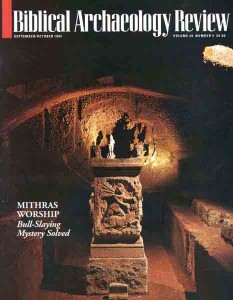
Mithraism, one of the most widespread mystery religions of the Roman empire, arose in the Mediterranean world at exactly the same time as Christianity. Each religion held at its core the belief in a god whose powers and domain lay beyond the boundaries of the cosmos. Because both religions began at about the same time and because both shared an ideology of cosmic transcendence, a study of Mithraism may shed vital light on the cultural and spiritual dynamics that led to the rise of Christianity.
Yet solid information about Mithraism is difficult to come by. Like other ancient mystery religions—the Eleusinian mysteries and the mysteries of Isis, for example—the Mithraic cult maintained strict secrecy about its teachings and practices, revealing them only to initiates. As a result of this secrecy, almost no literary evidence about the beliefs of Mithraism has survived.
Archaeologists, however, have uncovered hundreds of Mithraic temples, called mithraea (singular, mithraeum), scattered throughout the Roman Empire, from England in the north and west to Palestine in the south and east.1 The greatest concentrations have been found in Rome and in those places in the empire (often the most distant frontiers) where Roman soldiers, who made up a major segment of the cult’s membership, were stationed. The remains of these ancient temples and their contents, I believe, hold the key to the secrets of Mithraism.
Already a library member? Log in here.
Institution user? Log in with your IP address.

